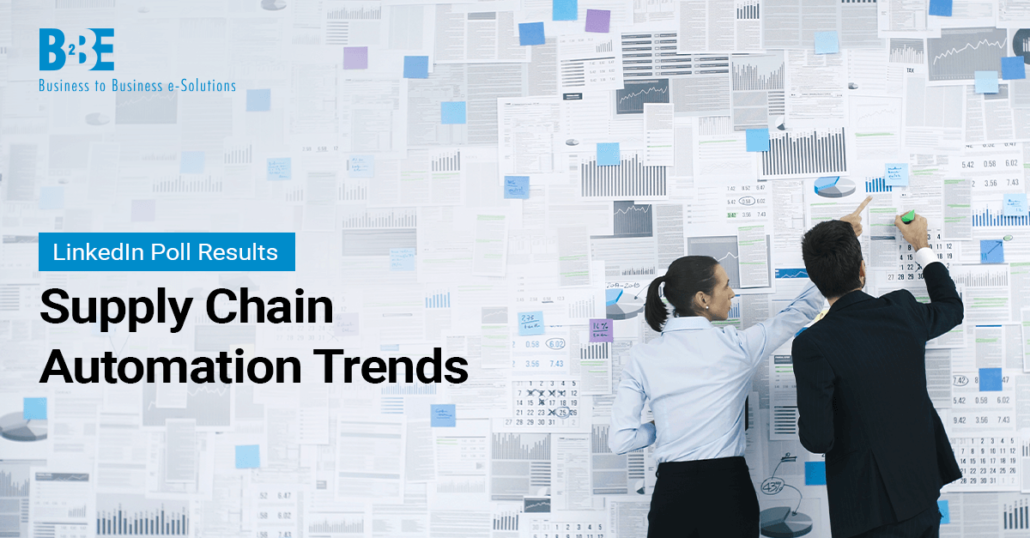In this blog post, we’ll explore the most important supply chain automation trends, as determined by our recent poll. We will review the results, examine the factors driving this trend, and discuss how it is likely to impact the industry going forward.
The rise of automation has revolutionised the supply chain industry in recent years. It allows companies to streamline their operations, reduce costs, and improve efficiency. With the increasing adoption of technology and data-driven solutions, the supply chain landscape is constantly evolving, and new trends emerge every year.
投票结果
在我们最近的 ǞǞǞ poll, we asked our social media followers: what supply chain automation trend will be most important this year?
Supply chain automation trends: what we found
Data Analytics – 45%
Data analytics has emerged as the most important supply chain automation trend of the year, according to our recent poll. In an era of digital transformation, data has become a critical asset for businesses to optimise their supply chain operations. By leveraging advanced analytics tools and techniques, companies can gain valuable insights into their supply chain performance. As well as identifying areas for improvement, and make data-driven decisions to increase efficiency and reduce costs. Moreover, data analytics can help companies predict demand, optimise inventory levels, and improve delivery times. All of which are essential for staying competitive in today’s fast-paced business environment. With 45% of respondents citing data analytics as the most important supply chain automation trend of the year, it is clear that businesses are recognising the transformative power of data-driven insights in driving supply chain success.
Hyper-automation – 30%
According to our recent poll, hyper-automation has emerged as the next most important supply chain automation trend of the year. 30% of respondents cited it as their top priority. Hyper-automation is the integration of advanced technologies such as artificial intelligence, machine learning, and robotic process automation to automate complex, end-to-end business processes. By automating multiple tasks across different functions and systems, hyper-automation can help companies reduce manual work. As well as improving operational efficiency and enhancing the customer experience. In the supply chain context, hyper-automation can enable end-to-end visibility. From order processing to delivery, enabling companies to track goods and manage inventory in real-time. With 30% of respondents recognising hyper-automation as a key trend in supply chain automation, it is clear that businesses are looking to invest in cutting-edge technologies that can transform their operations and enhance their competitive edge.
Digital Twins – 15%
Digital twins have emerged as the third most important supply chain automation trend of the year. That’s according to our recent poll, with 15% of respondents citing it as their top priority. A digital twin is a virtual replica of a physical object or system. It enables real-time monitoring and simulation of its performance. In the supply chain context, digital twins can help companies optimise their operations by providing a detailed view of their physical assets and processes. By leveraging real-time data from sensors and other sources, digital twins can help companies identify inefficiencies, optimise processes, and reduce downtime.
Moreover, digital twins can help companies simulate different scenarios and make data-driven decisions to improve their supply chain performance. With 15% of respondents recognising digital twins as a key trend in supply chain automation, it is clear that businesses are looking to leverage digital technologies to gain greater visibility and control over their supply chain operations.
Robotics – 10%
Robotics has emerged as our least selected supply chain automation trend of the year. That’s according to our recent poll, with only 10% of respondents citing it as their top priority. It involves the use of automated machines and equipment to perform repetitive or dangerous tasks in a supply chain environment. While robotics can improve efficiency and productivity in certain applications, it may not be the best fit for all supply chain processes. For instance, robotics may not be well-suited for operations that require a high degree of flexibility or customisation.
Moreover, robotics may be expensive to implement and require significant changes to existing infrastructure and workflows. With only 10% of respondents recognising robotics as a key trend in supply chain automation, it is clear that businesses are prioritising other areas, such as data analytics and hyper-automation, in their efforts to optimise their supply chain operations. However, robotics may still have a role to play in certain supply chain applications. It will be interesting to see how this technology evolves in the years to come.
更多信息
B2BE在供應鏈領域的經驗使我們的客戶能夠成功地建立、擴展和適應,實現更大的效益。要想与B2BE合作,就您和您的企业最关心的问题提供反馈,请务必 在LinkedIn上关注我们 和整个社会媒体。您还可以 在我们最新的LinkedIn投票中投票.如果你想讨论你的供应链战略。 取得联系 与我们一起。
